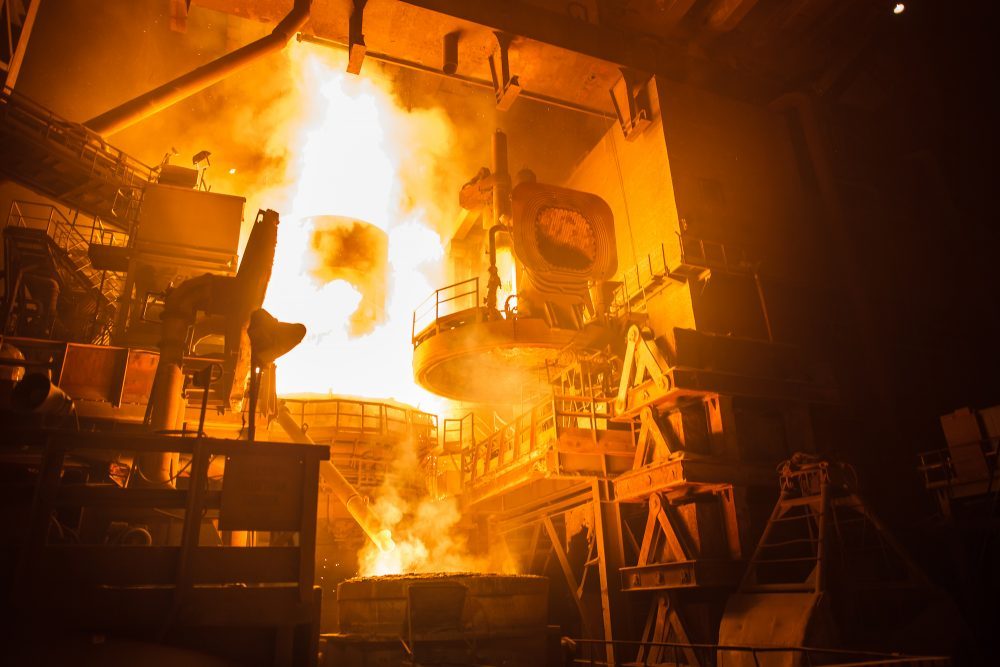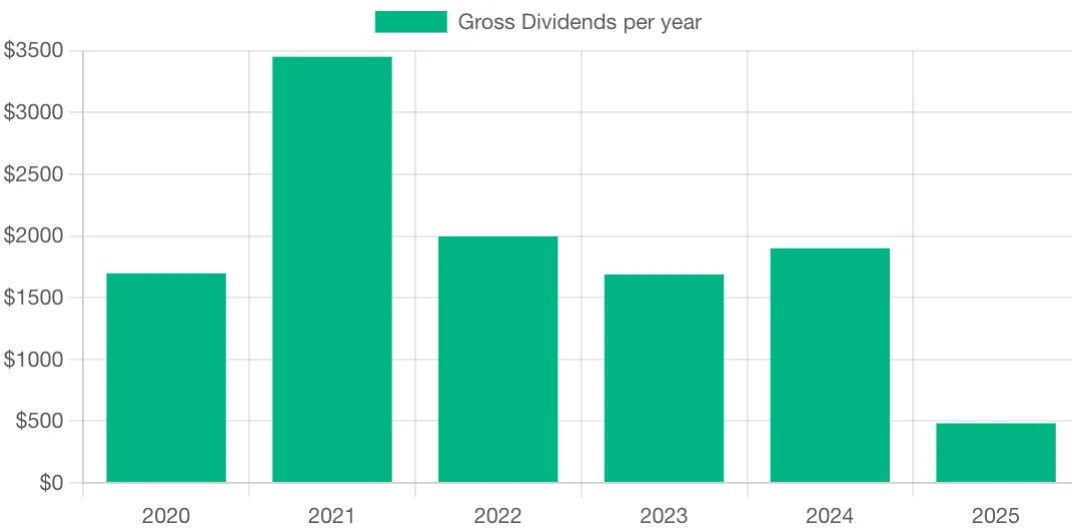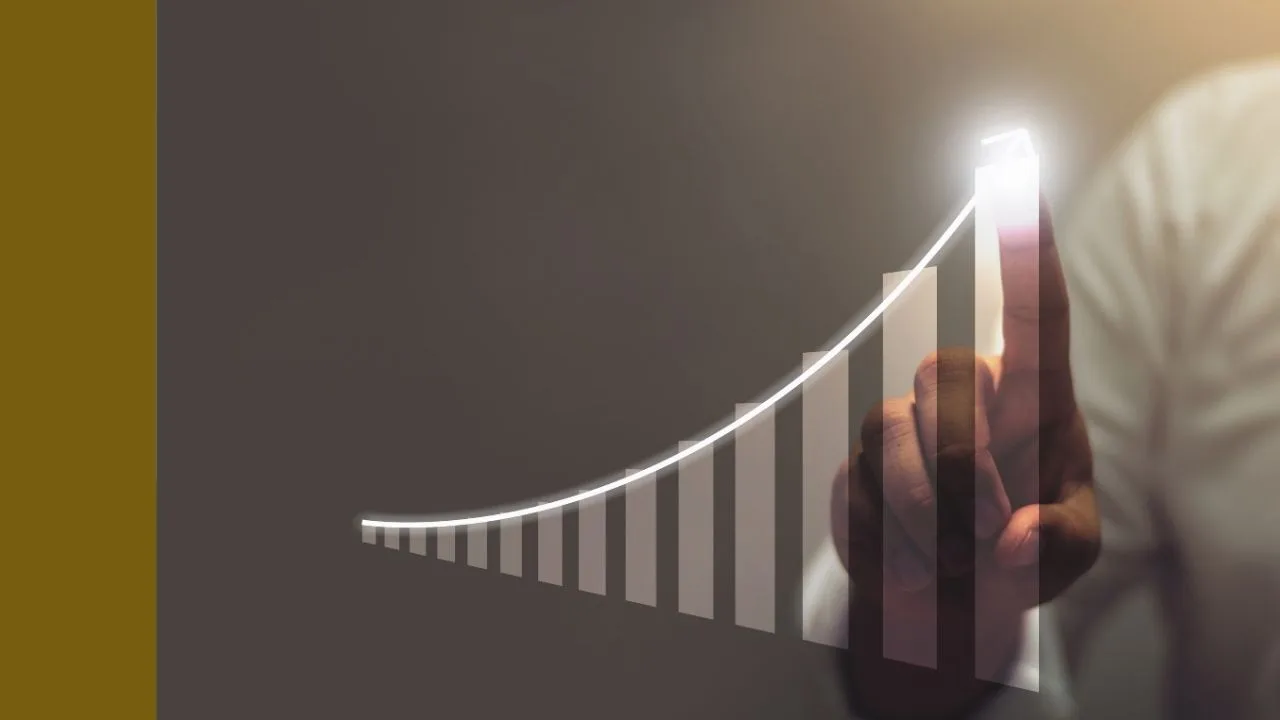Dear Rask Media reader, it’s time for some hard truths about ASX bank shares like National Australia Bank (ASX: NAB), Commonwealth Bank (ASX: CBA), ANZ Banking Group (ASX: ANZ) and Westpac Banking Corp (ASX: WBC).
I feel like a broken record…
I feel like a broken record…
Since my ol’ days as a freelance writer at The Motley Fool Australia I’ve been saying as I typed:
“I reckon it’s not a good idea to buy bank shares because there are clearly better options.”
Fast forward five years to now…
Here are the per share annual total returns (dividends + share price movement) from Big Bank shares over the past five years (according to Morningstar):
- CBA: negative 2.8%
- NAB: negative 5.9%
- ANZ: negative 7.5%
- Westpac: negative 8.7%
To be clear, I don’t feel good about shares falling.
But, please, take note of what I’m about to say…
There are 2,000+ shares on the ASX.
There are 10,000 shares overseas.
There are ~220 ASX-listed exchange-traded funds (ETFs).
There are ~2,100 ETFs on US markets.
Does Rask own bank shares?
To think shares in a big bank would have made their way into the Rask portfolio — my portfolio, which I now mirror with Rask Invest — five years ago…
That would have been a bad joke around my house.
Why?
Here’s what I believed back then (and still believe now, to some extent):
- Bank shares weren’t cheap. As measured by their price-to-tangible book values, dividend discount models, etc..
- Net interest margins were being squeezed by low-interest rates (note: the “NIM” tells you how much a bank makes when it lends money to borrowers). Extra point: the only way to make more profit when your margins are being squeezed is to add leverage or pump more revenue through your business.
- In my opinion, the banks had been serving Aussies crap financial advice with misaligned cultures and incentives for far too long. Meaning, their ‘wealth’ and insurance arms, which were quite profitable, were always on the chopping block to be sold. Royal Commission or not.
- Bad debts were at record lows… but banks are cyclical. Hello, 2020…
- The banking sector was becoming more — not less — regulated.
…anyway, we all know what’s already happened.
And I always try to keep my newsletters positive because that’s the way we invest: we do our best to buy companies that change the world, for the better, and of course we aim to make a lot of money as we go.
Indeed, what happens next with banks is still up for debate. And I’m reasonably confident there will come a time to buy bank shares if an investor is so inclined.
But rather than prognosticate over the specifics, I’ll go back to my first point and repeat what I’ve said for years: look outside the banks for dividend income.
There are so many options!
Sure, the “historical dividend yield” on some stocks or ETFs I buy might not be as tempting as the banks. But what matters is total returns.
That is, dividends plus capital gains. Or in the banks’ case: dividends minus capital gains minus the negative effect of capital raisings.
There’s a reason we call some dividend stocks “yield traps”.
How we’re managing the ‘dividend crisis’
At Rask Invest, we don’t specifically target dividends because we believe, as most investors with a five-to-10-year investment horizon should, that we would be doing our members a disservice by limiting our choices to stocks or ETFs with high yields only.
In my opinion, any investment in the sharemarket should be considered a minimum three-year commitment, especially in this environment.
If we take a three-year view, does last year’s dividend really matter?
No.
Indeed, as much as I love franking credits, what matters to investors is finding stocks/companies that are capable of compounding (i.e. reinvesting profits in their own businesses) at rates we can only dream of as private investors.
Some companies on the ASX achieve returns on investment capital (ROIC) of 100% by investing back into their businesses. Don’t believe me?
Here are the returns on capital (ROIC) of the Australian jewellery business, Lovisa Holdings Ltd (ASX: LOV):
- 2015: 220%
- 2016: 72%
- 2017: 131%
- 2018: 98%
- 2019: 64%
Eventually, these “cash boxes” compound so fast and so hard that their share prices can’t help but go up.
And once the market catches on… make sure you strap in for the ride.
Even with a big share price fall recently, Lovisa shares have risen from $3.14 in May 2015 to $6.93 today, according to Google Finance.
Core + tactical
Our simple, general investment advice to members and readers is this:
Build a core of diversified and low-cost ETFs and managed funds.
Then, if you want to, add some blue-chip shares for extra income. You can read my write-up of Washington H. Soul Pattinson (ASX: SOL) — I’d consider buying SOL before NAB or Westpac shares.
Finally — and this is the exciting part — only ever buy shares of companies capable of compounding (ROIC) viciously over a very long period — meaning they must have strong businesses, long growth runway and competitive advantage.
Earlier this month, I wrote to all Rask Australia readers about the little-known ASX-listed software company RPMGlobal Holdings Ltd (ASX: RUL).
It’s been held by Rask Invest for quite a while. It’s one of the small-cap share picks on our public scorecard (available on rask.com.au).
You can read my full report on RPM and listen to the podcast by clicking here.
Final note – my “better dividend option”
This week, we’re releasing a comprehensive 20-page investment report exclusively to Rask Invest & Rask ETF members.
This report, which has been weeks in the making, takes an in-depth look at what I believe is the single-most-important development in the Australian funds management industry over the past 10 years.
I believe this theme is going to fundamentally change the way Australian investors go about building their portfolios.
Like my view on bank shares five years ago, our investment report is going to rub many experts the wrong way. I’ll probably receive a lot of flak for it.
But you know what?
I don’t care.
I’ll wear it.
Because what I do care about is making sure our loyal members and readers get the best possible investment advice we can provide them.
If you want to receive the report, see what stocks I’m buying with my own money (there are more like RPMGlobal), get access to our weekly updates and ongoing coverage, plus advanced access to expert interviews, invites to exclusive events (coming soon…) and unlimited access to our ETF research…
You know where to go.
Simply click here and log in to your Free Rask account (if you have one) then upgrade, or just click here to become a premium Rask Invest member.
It’s $399 for six months (note: we rarely do discounts).
Just imagine if our research helps you find the next RPMGlobal…
Stay safe & cheers!
Owen Raszkiewicz
Lead Investment Analyst, Rask Invest
Founder, Rask Australia
P.S. Although I may appear insensitive to bank shares falling, you should know I’m just bloody frustrated so many pensioners and mum and dad investors get handed poor quality investment advice from so-called ‘experts’.
P.P.S. That’s why Rask Invest exists.
[ls_content_block id=”18457″ para=”paragraphs”]
Disclosure: at the time of publishing, Owen owns shares of RPMGlobal.
Historical returns are believed to be accurate at the time of publishing but they could be wrong. Please don’t rely on them.








